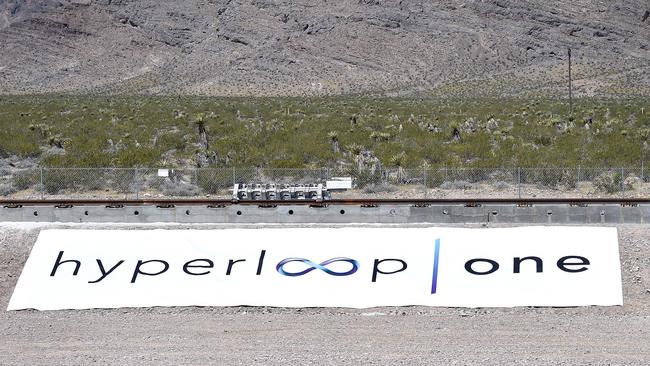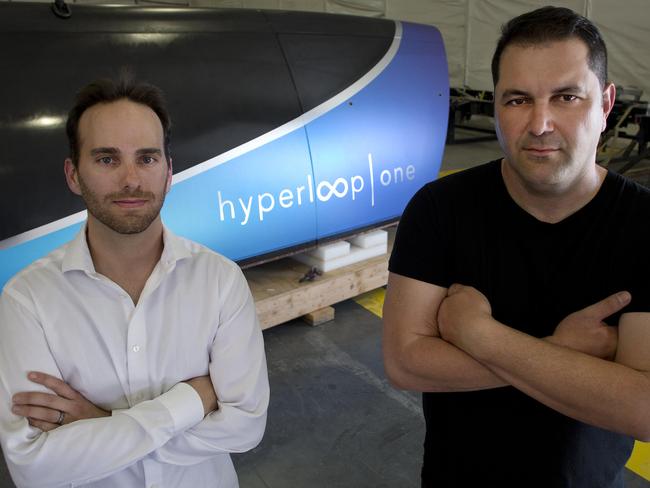Hyperloop start-up moves closer to near-supersonic rail
A US start-up has pulled off a major test of Elon Musk’s super speed train idea. “We essentially invented our own sky in a tube,” the company said.
US start-up Hyperloop One has announced the first successful full-systems test of its near-supersonic rail transit system.
The test took place in May at the company’s development track in the Nevada desert near Las Vegas, and involved a vehicle coasting above tracks for slightly more than five seconds using magnetic levitation, according to the company.
The test vehicle accelerated to a speed of 112km/h during the test, and the company’s next goal is to ramp the speed to 400km/h, Hyperloop One said in a release.
Hyperloop One has accomplished what no one has done before by successfully testing the first full scale Hyperloop system,” said start-up co-founder and executive chairman Shervin Pishevar.
“By achieving full vacuum, we essentially invented our own sky in a tube, as if you’re flying at 200,000 feet (60,000 meters) in the air.”

In 2013 Elon Musk outlined his revolutionary idea for a bullet train system — consisting of a solar powered tube and levitating pods — that could theoretically shoot passengers between cities at speeds close to the speed of sound.
The Tesla and Space X CEO said he was too busy to build it himself so he threw it open to the public along with a 58 page paper outlining his idea.
Hyperloop, which later changed its name to Hyperloop One, was one of two main groups to take on the project and (despite a rather ridiculous legal battle among company execs) is the most promising start-ups to pursue the idea.
The innovative train design has even been proposed as a potential answer for a high speed link between Sydney and Melbourne — however some experts have cast doubts about how the human body would react to a ride on Hyperloop.
Introducing the world’s only vehicle that achieves autonomous high-speed propulsion and levitation in a vacuum environment: our pod! pic.twitter.com/f65gD1asu5
— HyperloopOne (@HyperloopOne) July 12, 2017

SO WHAT EXACTLY IS HYPERLOOP?
The ridiculous nature of the legal dispute (which is involving nepotism, sexism and even death threats) could spook investors and derail the project — but the Hyperloop One start-up remains one of the most hyped in Silicon Valley. This is at least in part because it is the brainchild of Elon Musk.
So how does it work?
The company will rely on a passive magnetic levitation system developed by Lawrence Livermore National Labs.
According to the science that underpins the project, magnetic fields in the tunnel will lift the pod before a “thrust force” is applied, which will then accelerate it to speeds of up to 1230km/h. At least that’s the idea.
When the same force is applied for breaking the pod, the system’s battery is recharged through regenerative braking.
“Using a passive levitation system will eliminate the need for power stations along the Hyperloop track, which makes this system the most suitable for the application and will keep construction costs low,” Hyperloop Transportation Technologies COO Bibop Gresta said last year.
“From a safety aspect, the system has huge advantages, levitation occurs purely through movement, therefore, if any type of power failure occurs, Hyperloop pods would continue to levitate and only after reaching minimal speeds touch the ground,” he added.
Hyperloop One had originally promised a full-scale demonstration by the end of 2016, after a successful test of the propulsion system.
Systems tested in May included the motor, vacuum pumping, magnetic levitation, and electromagnetic braking, the company said.
— With AFP



